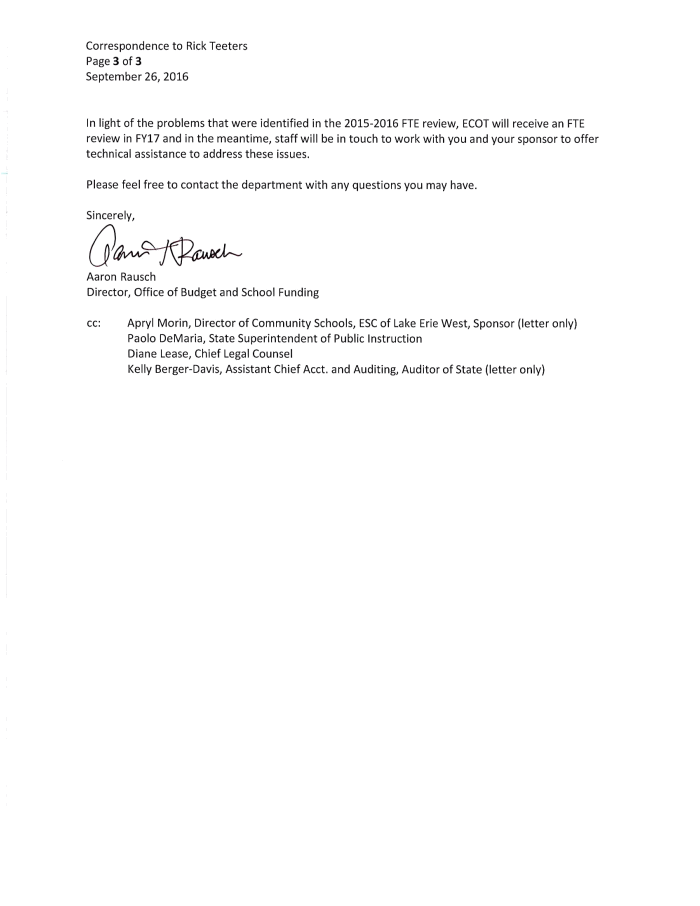ECOT attendance inflated by 9,000 students, audit finds; $60 million in state funding in jeopardy
COLUMBUS, Ohio - Ohio's largest online charter school, the Electronic Classroom of Tomorrow (ECOT), was paid for 9,000 more students than it should have last school year, an Ohio Department of Education enrollment audit has found.
In a letter to the school today, the department tells the school that it has proper documentation for only 6,300 of its 15,300 students - a 59% gap.
The letter does not spell out how much money ECOT could be forced to return, but with ECOT receiving $109 million last year for the 15,300, $64 million in money is at risk.
ECOT has 10 days to appeal the finding.
"No adjustment to the Full Time Equivalency number (and funding) will be made until ECOT exhausts its appeal rights," the letter states.
See the letter below.
A ruling from Franklin County Common Pleas Judge Jennifer French later this week could make the audit irrelevant. French heard a week of testimony earlier this month on an ECOT challenge of the audit and the ways the state is counting enrollment.
"We strongly disagree with ODE's letter which is why we are already in court," said ECOT spokesman Neil Clark.
At issue is whether ECOT must only show that students have enrolled and that they log on, however briefly, to avoid truancy violations and to receive full state funding for each student. The state has been seeking proof that students are spending more than one hour a day online, as early reviews showed,
Because the school in the past has not had to provide documentation of the work that its students do, school leaders have said it's unfair to expect the documentation retroactively for the just-finished 2015-16 school year.
In the court case, ECOT has also pointed to a 2003 agreement between ODE and the school that state funding of the school would be based only on students that enroll and log on at least once.
"We knew this process was a sham and ODE's actions prove it," Clark said. "They have and continue to railroad all e-schools in the state. It is impossible for any e-school to meet the retroactive demands of ODE, which is why no e-school in the state has been able to do so. ODE made arbitrary requirements and then applied them retroactively."
ECOT Superintendent Rich Teeters testified that if the state made the school repay most of its money, and limited what it could collect in the future, that wouldput the school in a "death spiral."
Lawyers for the state have challenged that 2003 agreement and whether it should still be in effect today.
The audit looked at detailed records for 700 students this summer and extrapolated results for the entire school.
It also states that ECOT will be audited again next year because of the problems found this year, instead of in five years on the state's usual schedule. That could be important if the court blocks the findings of this audit and bars the state from requiring documentation of participation in classes until next year.
Ohio, along with California and Pennsylvania, are the top states in the country for the number of kids in online schools, according to the National Alliance for Public Charter Schools (NAPCS).In the 2014-15 school year, 38,500 Ohio students took their classes on computers from home through an online school.
For the 2015-16 school year, Ohio paid online schools $267 million to educate those students -– more than a quarter of what it paid all charter schools in the state.
ECOT and Ohio Virtual Academy, with 15,000 and 11,000 students, are the largest online schools in Ohio.
THE DEBATE OVER CHARTER SCHOOLS





